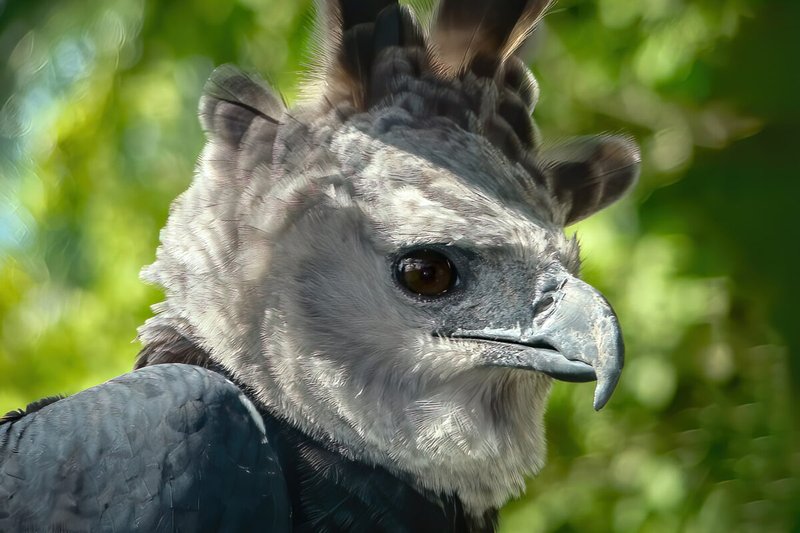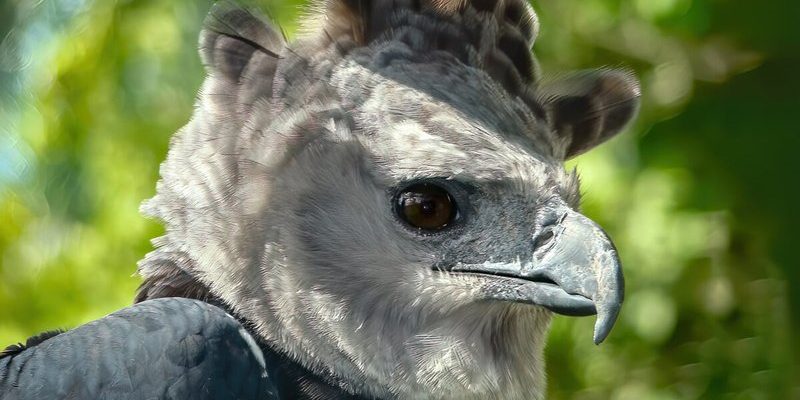
Imagine the Harpy Eagle as the king of the treetops, ruling over the rainforest with its keen eyesight and fierce presence. But just like any ruler, it faces challenges that threaten its reign. Conservation efforts aimed at protecting the Harpy Eagle are pivotal, and understanding what these efforts entail can open our eyes to the beauty of nature and our role in safeguarding it. Let’s dive into the various ways we’re working to ensure this powerful bird continues to thrive.
Why the Harpy Eagle Is at Risk
The Harpy Eagle is an awe-inspiring creature, with massive talons that can rival those of a bear. But despite its might, it faces numerous challenges. One of the biggest threats is deforestation. As rainforests are cleared for agriculture and urban development, the Harpy Eagle loses its habitat. Imagine being forced out of your home and having nowhere to go. That’s what these eagles experience as their trees vanish.
Another threat comes from poaching. Some people hunt Harpy Eagles for their feathers or as trophies. This not only reduces their numbers but also disrupts the ecosystem. The Harpy Eagle plays a crucial role in its habitat, and its decline can lead to an imbalance, affecting many other species.
Climate change also poses a significant risk. Changes in weather patterns can affect prey availability. With fewer animals to hunt, the Harpy Eagle may struggle to find enough food to survive. This interconnected web of challenges highlights why conservation efforts must be comprehensive and targeted.
Habitat Preservation Initiatives
One of the most effective ways to protect the Harpy Eagle is through habitat preservation. This means ensuring that vast landscapes of forest remain intact. Conservation organizations work with governments and local communities to create protected areas where these eagles can thrive without threat.
These initiatives often involve setting up national parks or wildlife reserves. For example, in countries like Brazil and Colombia, there are specific areas designated for the protection of the Harpy Eagle’s habitat. This provides a safe haven where they can nest, hunt, and raise their young without the interference of human activities.
Additionally, habitat restoration projects are crucial. This can involve replanting native trees and restoring the natural landscape that has been damaged. It’s like giving the Harpy Eagle back its home, allowing it to soar freely once again. These efforts are not only good for the eagles but also for countless other species that share their environment.
Community Engagement and Education
You might be wondering how communities play a role in protecting the Harpy Eagle. The truth is, local people are crucial to the success of conservation efforts. Engaging communities means creating awareness and fostering a sense of responsibility towards the environment. When people understand the importance of the Harpy Eagle and its role in the ecosystem, they are more likely to support conservation initiatives.
Education programs in schools and community centers can help spread this message. Workshops, birdwatching tours, and educational materials can all contribute to a growing appreciation for wildlife. Imagine kids learning about the Harpy Eagle in their classrooms and then spotting one during a nature walk—they’re building a connection that can last a lifetime.
Local communities can also benefit economically from conservation. Eco-tourism related to the Harpy Eagle can create job opportunities while promoting a healthy environment. When people see the value of preserving their natural heritage, they become vital allies in the fight against habitat destruction and poaching.
Legislative Actions and Policies
Government policies play a significant role in conservation. Strong legislation can protect endangered species like the Harpy Eagle from hunting and habitat destruction. Laws that regulate land use and protect natural habitats are essential.
Additionally, international cooperation is crucial because the Harpy Eagle does not adhere to borders. Various countries must work together to create strategies that ensure the eagles and their habitats are protected. Treaties and agreements can provide frameworks for collaboration, sharing best practices, and pooling resources for conservation efforts.
Policies that support wildlife corridors—areas that allow animals to move safely between habitats—are also vital. This ensures that even as habitats are fragmented, the Harpy Eagle can still find the resources it needs to survive.
Research and Monitoring Programs
Ongoing research is essential to understanding the Harpy Eagle’s behavior, breeding habits, and population status. By tracking these majestic birds, scientists can gather valuable data that informs conservation strategies.
Monitoring programs often involve the use of GPS tracking devices that provide real-time data on the eagles’ movements and nesting sites. This information helps identify critical areas for protection and can reveal how the eagles interact with their environment. It’s like solving a mystery, piece by piece, to uncover how we can better protect these magnificent creatures.
Moreover, research also helps assess the effectiveness of conservation efforts. By studying how the Harpy Eagle populations respond to different strategies, conservationists can adapt their approaches as needed. This adaptive management ensures that efforts remain relevant and impactful over time.
The Role of Zoos and Breeding Programs
Zoos and wildlife sanctuaries also play an important role in conservation efforts for the Harpy Eagle. Many zoos have dedicated breeding programs aimed at increasing the population of these eagles. The goal is not just to keep them safe but to eventually release healthy individuals back into their natural habitats.
These breeding programs often involve collaboration with other institutions and conservation organizations. By sharing knowledge and resources, they can ensure the eagles are raised in a way that maintains their natural behaviors and skills. It’s a bit like preparing a young athlete for the big leagues—they need the right training and environment to succeed.
In addition to breeding, zoos also serve as educational platforms, raising awareness about the importance of protecting the Harpy Eagle. Through exhibits and informative talks, they can inspire visitors to support conservation efforts and understand the challenges these magnificent birds face.
Protecting the Harpy Eagle isn’t just about saving a beautiful bird; it’s about preserving the rich tapestry of life that defines our ecosystems. The actions we take today can lead to a healthier planet for future generations.
From habitat preservation to community engagement and legislative action, every effort counts. The combined force of dedicated individuals, organizations, and local communities can create a powerful impact. By understanding the challenges and supporting conservation initiatives, we contribute to a brighter future for the Harpy Eagle and many other species that inhabit our world.
In the end, let’s remember: when we protect the Harpy Eagle, we’re not just saving one bird; we’re ensuring the survival of countless creatures and the environments they depend on. Together, we can make a difference—one eagle at a time.

